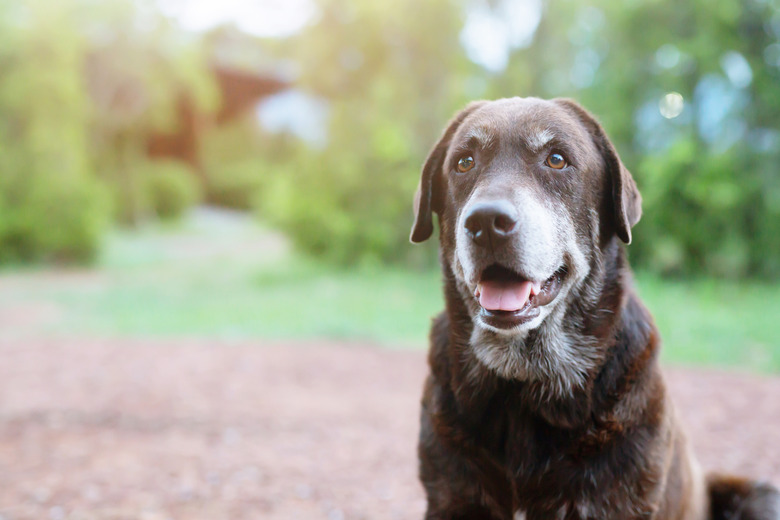How To Bury A Pet At Home
It's devastating to lose a pet you've had for years. Dogs and cats are members of our families — and the death of a pet can be heartbreaking. But there's a small way you might mitigate some of the distress you feel: burying a pet at home. By interring your beloved pet on your own property, you can visit the site often and feel comforted that your cat or dog is at rest where he was happiest.
Keep in mind, however, that state and city laws generally prevent pet burial in public locations, which means you can't dig a hole at the dog run or in a local park for your animal's eternal resting spot. Instead, if your dog or cat is dying and you think you'll need to make a plan for him soon, become familiar with the best practices for burying a pet at home, including the right spot to choose, which materials you'll need, the depth of the grave, and a few safety measures.
Burying a pet at home
Burying a pet at home
Here's a breakdown of how to approach an at-home burial for your cat, dog, hamster, gerbil, or bird.
1. Gather the gear.
You'll need disposable gloves, a shovel, something to wrap your animal in, and a burial container. You may even want to wear a face mask to block any odor (ideally, you'll have stored your pet in a fridge or other cool place beforehand).
2. Prep your pet.
Secure your dog or cat in a cotton sheet or special bath towel. You might also include your pet's collar, tags, and favorite toys in the bundle as part of the remembrance.
3. Find a box.
Depending on the size of your pet, choose a burial container, such as a hatbox, wicker basket, trunk, wooden crate, sardine tin, cigar box, or shoebox.
4. Locate a burial site.
As mentioned, pet cemeteries can't be dug just anywhere. You need to avoid live power lines, underground sprinkler systems, natural water sources, and vegetable gardens. Good burial spots include an unused area of your lawn, near a tree, or along the edges of your yard.
5. Have a ceremony.
It's not necessary, of course, but some pet owners may find solace in saying a few words, singing a song, or sharing stories about their pet's life at the gravesite.
6. Gauge the grave size.
Place the container on the site and make an outline as a guide for the hole's size with the shovel tip. Add 10 inches around the container to avoid a snug fit. Dig the hole at least 24 inches deep and then fill and pack the soil down after placing your pet in it.
7. Add a marker.
A heavy grave marker is important to deter pests from digging up the grave. Pet cemeteries can be marked with a large stone, a pile of rocks, or an engraved memorial.
8. Wash up well.
Handling a dead animal isn't the most sanitary task, so it's a good idea to wash your hands immediately after the burial, change your clothes, and toss them in the hamper.
As you approach the burial of your cat or dog, understand that grief is a very normal part of the process. Pet loss can cause a wide range of complicated feelings to emerge—and grief is very individual. It's fine to cry and feel sadness at the loss of a pet. To ease your pain, you might join a support group. But if your grief is profound and all-consuming, seek professional help from a doctor or counselor.
And when you're ready, adopting a new dog or cat can be of great comfort after the death of a pet, though this too is an individual decision. Take a break to reflect and weigh the idea of a new animal at home and when the time is right, you'll know it.

